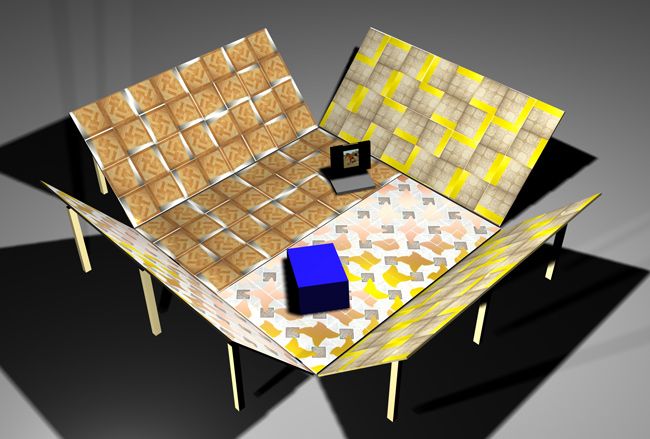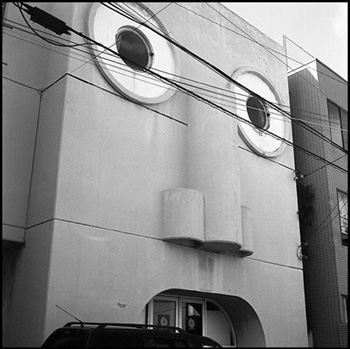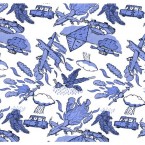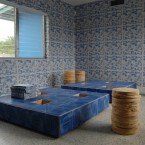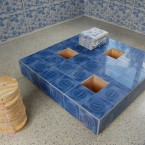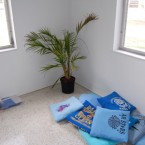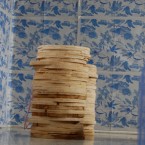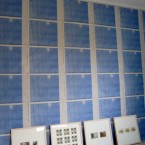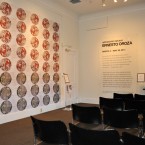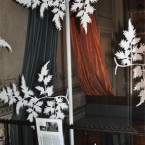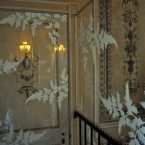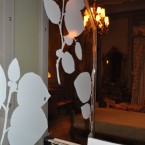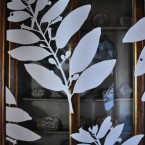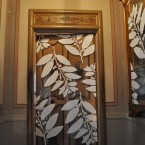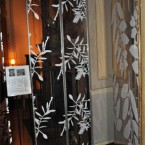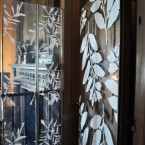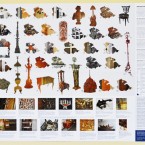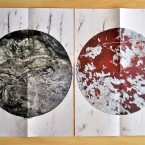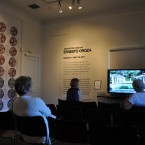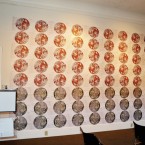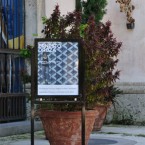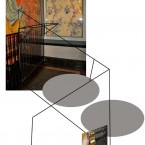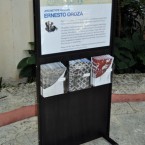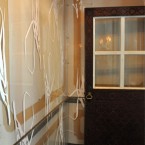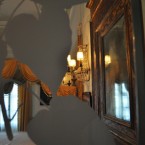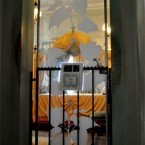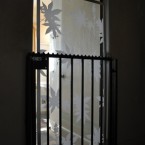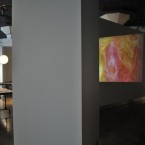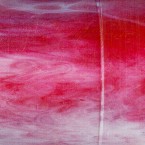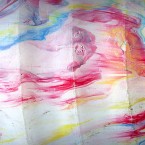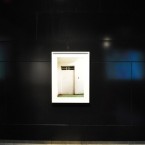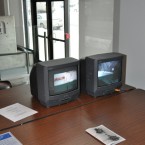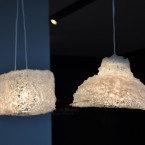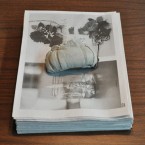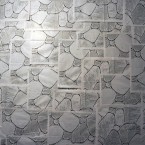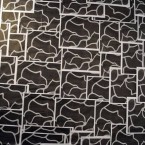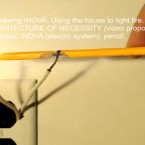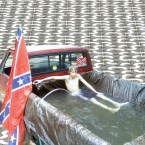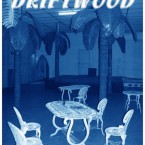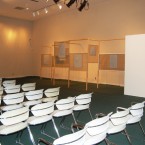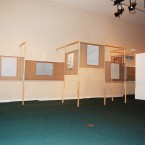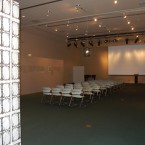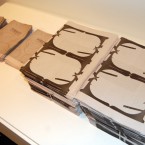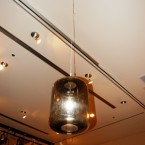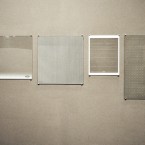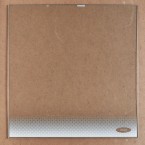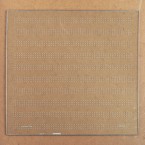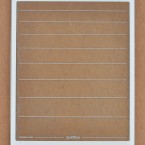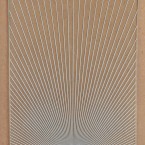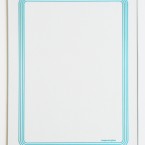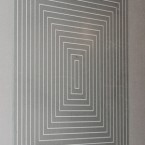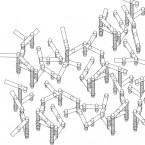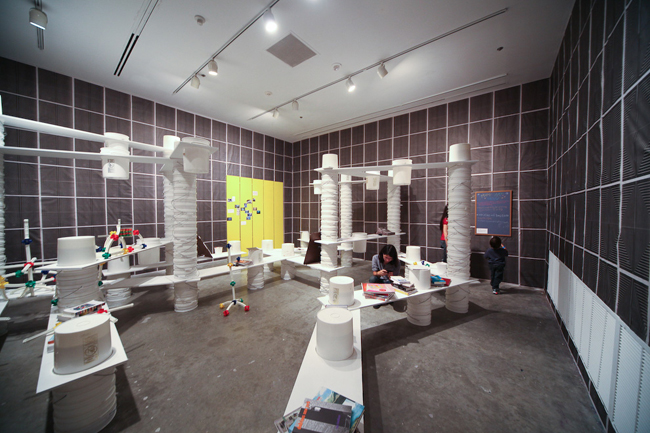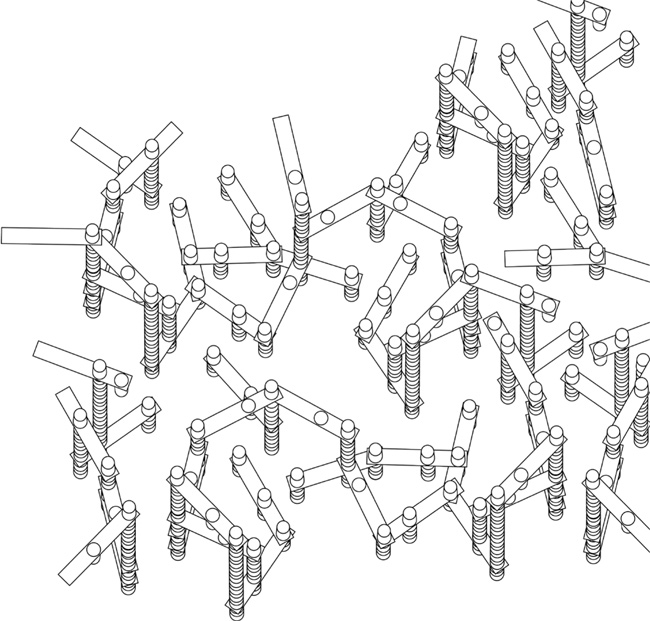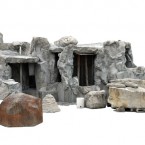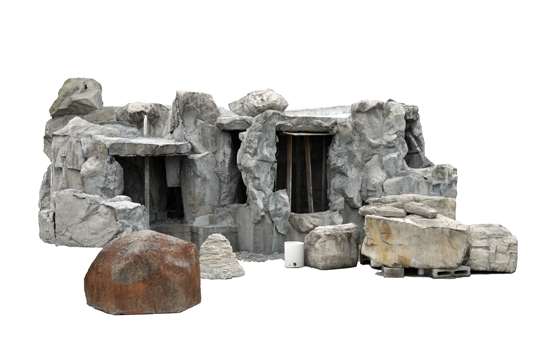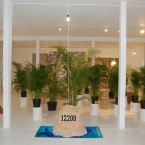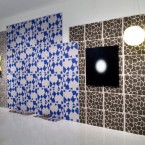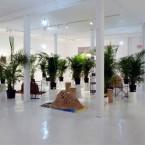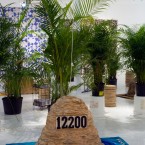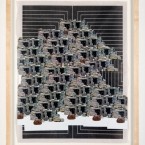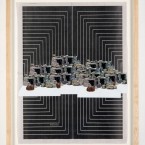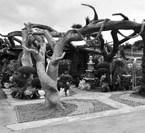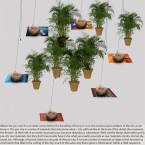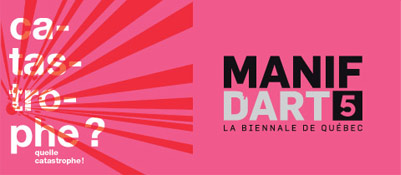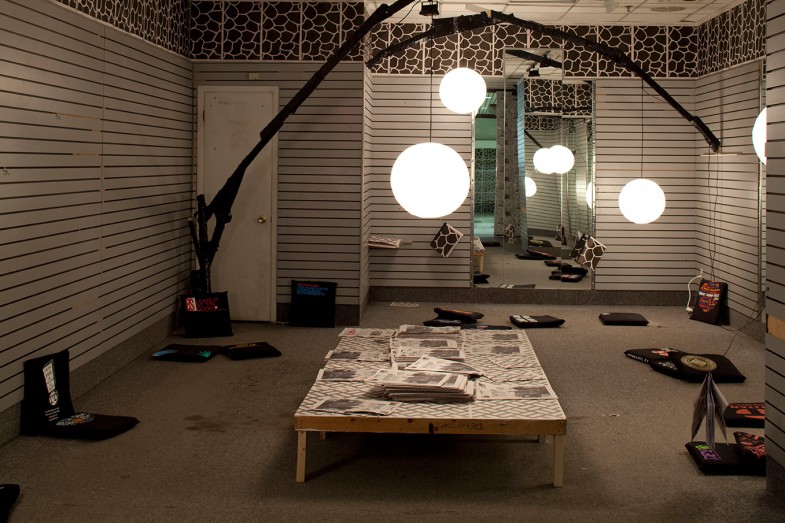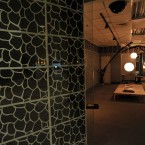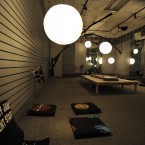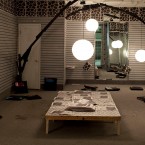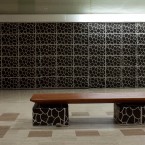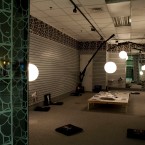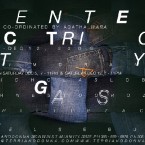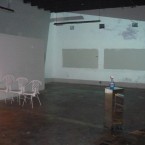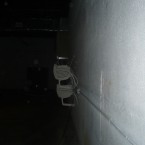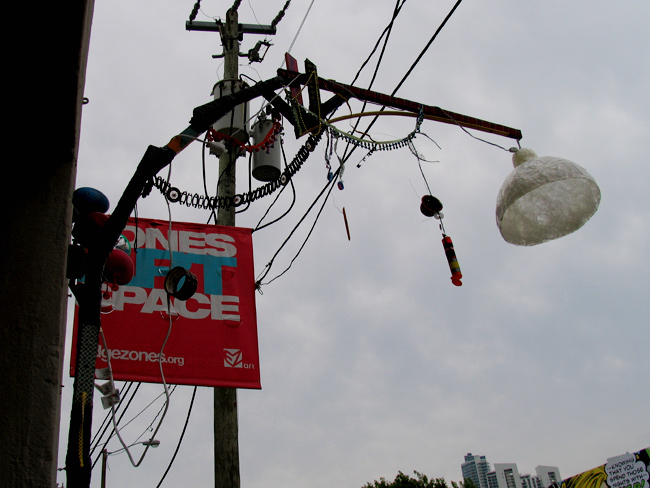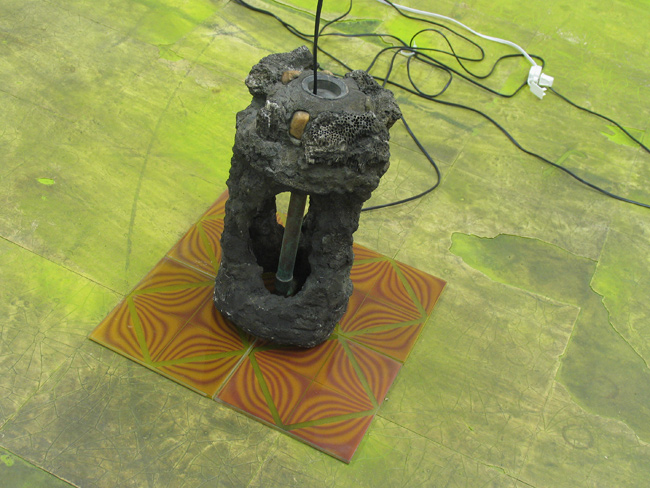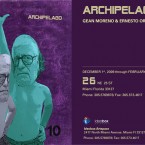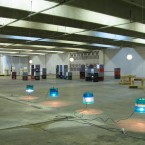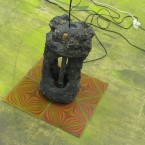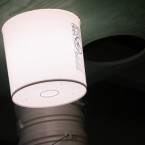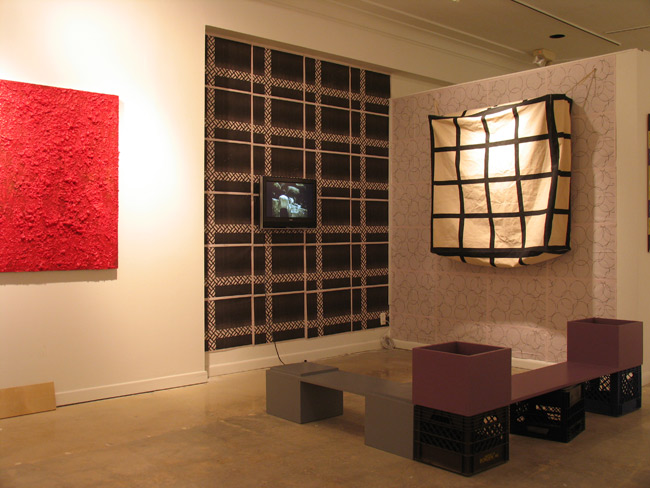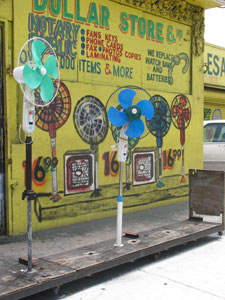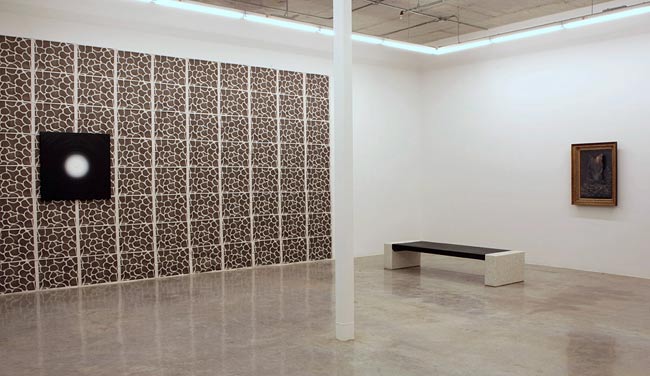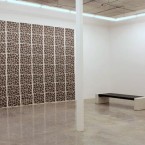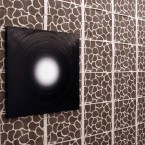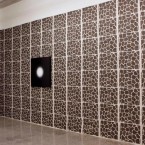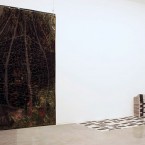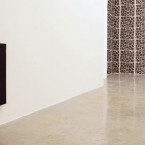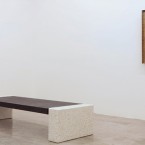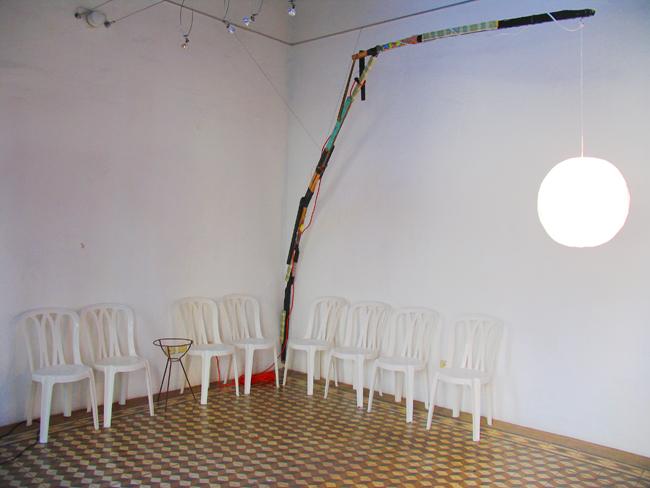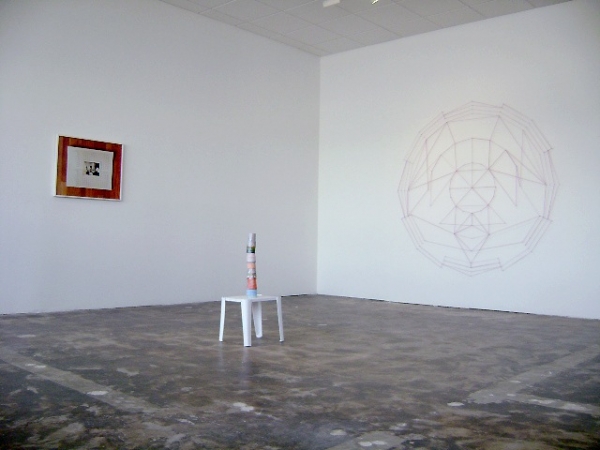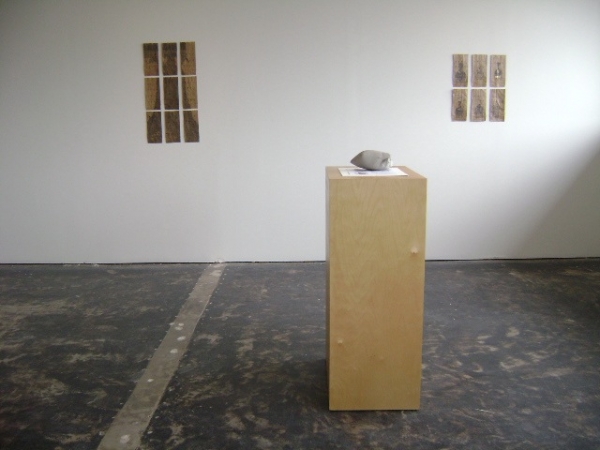Improvising Architectures Christy Gast, Adler Guerrier, Nicolas Lobo, Ernesto Oroza, Viking Funeral, Graham Hudson, Felipe Arturo, Heather Rowe and Carlos Sandoval de León
Curated by Gean Moreno
Project opening January 13th 2011
Press release:
Improvising Architectures
Over the last decade there have a been a number of exhibitions dedicated to Miami artists. These have been excellent at presenting a generation of homegrown artists, and explaining its internal dynamics and its relationship to previous generations that migrated to, and continue to work in the city. What these exhibitions haven’t done as consistently is place the work of Miami artists alongside that of their international generational peers in a concrete way–that is, by literally presenting the work side-by-side, on equal footing.
It is only by doing this that we can begin to gauge how these artists fare in an international context. One the one hand, the similarities that Miami artist may share with their international counterparts will surface, disclosing how their work fits within international trends. On the other hand, their differences will also shine through to reveal what new positions they bring to an international dialogue. One of the goals of Improvising Architectures is to begin this process of presenting Miami artists within a larger context in a systematic way. It will showcase the work of five Miami artists–Christy Gast, Adler Guerrier, Nicolas Lobo, Ernesto Oroza and Viking Funeral–along side that of artists who live in London (Graham Hudson), Bogotá (Felipe Arturo), and New York (Heather Rowe and Carlos Sandoval de León).
Another goal of the exhibition is to take improvised architectural spaces as figures through which to think a world of globalized networks. What is the relationship between “nomadic” structures or improvised buildings and a world that is, at once, more connected and more disconnected, more prone to swift changes precisely because it is a world of expanding horizons? What happens when a sense of the precarious begins to be felt everywhere? Of course we need not think of all this so literally. What of discursive or mental architectures–ways of seeing the world–that need to be improvised to keep up with the velocities and changes that cut right through our everyday lives? The improvised dwelling site is a metaphor for ways of thinking that need to be light enough to change quickly as disruptions and alteration continue to reorganize the world for us. The sculptures and installations in this exhibition allude to the informal architectural structure as a double metaphor. On the one hand, as the trope for a type of building that recognizes the world as a series of forces that can change everything in an instant. And, on the other hand, as a metaphor for the kind of thinking that is necessary in a world that is increasingly characterized by erratic shifts, proliferating information, and expanding vistas.
ENTER THE DRAGON Pop-up shop, Ernesto Oroza, 2010

Customized vinyl adhesives tiles, fluorescent lamps, prints
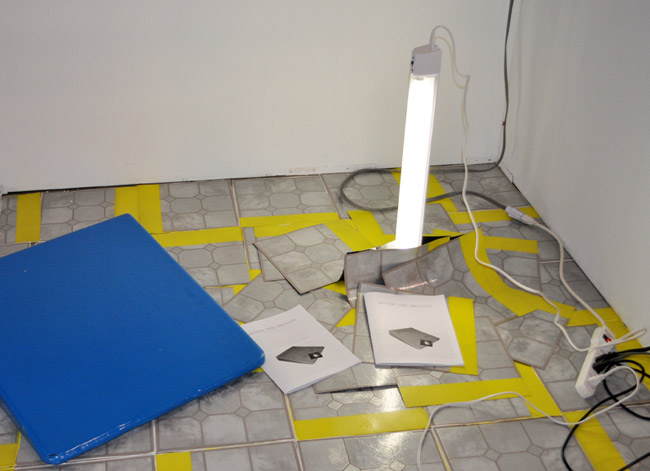
Customized vinyl adhesives tiles, fluorescent lamps, prints
ENTER THE DRAGON
Hay imágenes que tienen la capacidad de cambiar el sentido de una práctica. Una de ellas es No-Stop City, fue elaborada por Archizoom in 1969.
El grupo creó y divulgó decenas de dibujos, fotomontajes y fotografías de modelos que diagramaban este fatalismo urbano que es la ciudad genérica. Su propuesta interpretaba y anunciaba en los nuevos espacios de producción y consumo (fábricas, supermercados y grandes mall), un modelo real para urbanizaciones interiores totales, espacios fluidos con capacidad infraestructural para atender a todas las necesidades de los habitantes. Si bien la tesis de Archizoom iniciaba con un análisis crítico-realista al sistema capitalista y específicamente al estado de hyper consumismo, sus creaciones se enfocaron en mostrar paisajes premonitorios en los cuales quedaríamos habitando, obligatoriamente y quizás acosados por un espacio exterior árido y contaminado, reductos interiores ambientados y normalizados por una incipiente, en aquel entonces, burocracia global capitalista.
Entre 1970 y 1972 el colectivo da a conocer un conjunto de nuevas fotografías de maquetas realizadas al centro de una estructura prismática formada por cuatro espejos. Cada set acogía un mini universo modélico y lo expandía por medio de la percepción fotográfica hacia un sinnúmero de reflexiones. Una palma, unas columnas metálicas, una alfombra, una moto, una cocina, una casa de campaña, algunas rocas se usaron indistinta o conjuntamente para crear los paisajes interiores de No-Stop City. Los únicos límites visibles en la perspectiva se lograban con las representaciones de pisos alfombrados y pavimentados, falsos techos reticulados iluminados, paredes de panelería metálica o plástica modulares.

Un ambiente micro climatizado y alumbrado artificialmente es la condición perpetua de estos modelos que devoran nuestra mirada, repetición tras repetición, en una perspectiva sin fin. Aun aquellos que representan un paisaje exterior con zonas de césped, e incluso árboles y edificios, parecen producirse en un interior con luces y clima controlados hasta la infinitud. Y es que las distinciones efectivas entre áreas y funciones, entre exteriores e interiores, espacios de producción y consumo (y desecho), entre sitios de trabajo y descanso o recreación parecían colapsar una y otra vez en cada célula especular. Es posible que las funciones enmarcadas y la especialización de áreas hubieran producido interrupciones en la perspectiva deseada para esta metrópolis fluida. Al suprimirlas, apostando por un imperativo visual que favorecía la indiferenciación de zonas de uso, predijeron la condición invasiva, desparramada y ubicua (en términos funcionales, métricos y logísticos) de la materia genérica contemporánea.
Siempre he creído que la imagen de No-Stop City, como un modelo de expansión solo pudo ser imaginado sobre otra figura de invasión: la de la Roma imperial. Aunque la tipología fluida y la escala mega estructural de este proyecto urbano pudiera tener antecedentes formales en la New Babylon de Constant y comparte esos mismos rasgos con el Monumento Continuo de Superstudio, las urbes conectadas de Archigram y la ciudad espacial de Yona Friedman, entre otros proyectos de la época, se distingue de estos al colocar como energía generativa al capital, los modelos económicos transnacionales, el lenguaje convencional de lo genérico, las normas y su instrumentación.
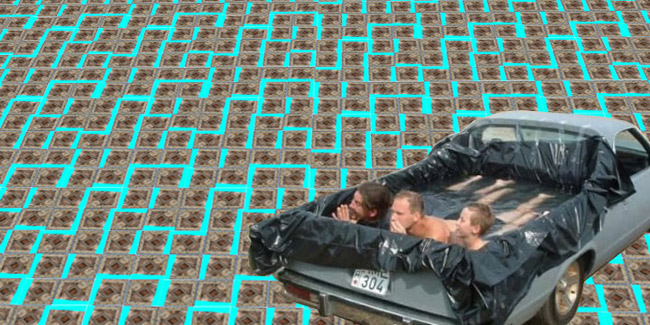
Las maquetas y diagramas usados en prácticas proyectuales como la arquitectura, el diseño y el urbanismo se comportan como caballos de Troya. Son, frecuentemente, objetos de traición y decepción. Lo que parece ocurrir es que por mediación de su capacidad anunciadora estos modelos promueven también, sin que esto sea un propósito, las realidades de su propio tiempo. Es decir, albergan en su cuerpo de madera, cartón y plástico las realidades tecnológicas, ideológicas y económicas que el arquitecto radical está criticando y pretende superar. Estas realidades no solo se asientan en las materias del modelo sino que parasitan inequívocamente los vehículos para la trascendencia del mismo. Viajan en el tiempo, la realidad y su crítica, hasta derretirse en un solo cuerpo.
Cada hito intelectual está constreñido, atrapado en el lenguaje proyectual de su tiempo y en muchas de aquellas visionarias propuestas de los 70´ se transpira hoy la presencia de afectadas ideologías tecnológicas, las ineficiencias para trascender de las técnicas y formas de comunicación de su tiempo y esa incapacidad que tiene el imaginario tecnológico para adelantarse al futuro.
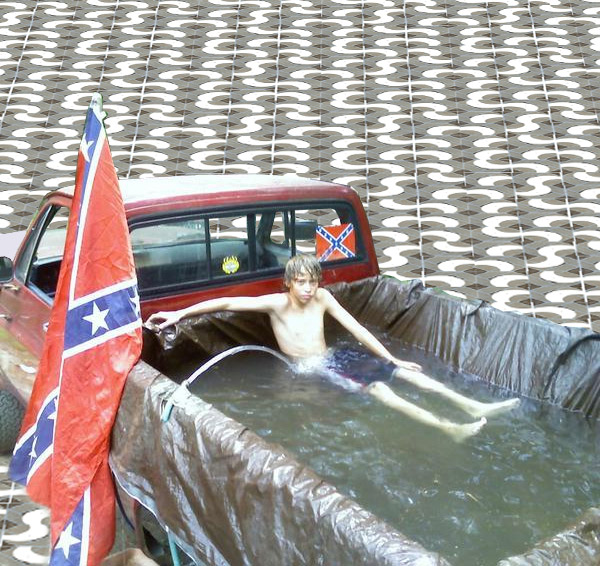
Un año atrás, mirando fotografías de los modelos de No-Stop City en el último libro publicado sobre el grupo, descubrí pequeños accidentes en los bordes de las maquetas, restos de pegamento, desniveles, polvo, manchas, fisuras. Creo que estas intrusiones no fueron producto del envejecimiento, pues las fotos debieron tomarse inmediatamente tras la fabricación de los modelos, sino que -formaron parte del proceso constructivo mismo. Noté después que estas minúsculas imperfecciones y las costras se multiplicaban también en los espejos creando un nuevo patrón de repeticiones que una vez visto no puede ser obviado.
En la nueva imagen (ya no puedo recuperar la anterior) cohabitan la palma (recurrente en los proyectos de Archizoom) con cúmulos de basura y arañazos. En la unión entre el falso techo y las columnas abunda la entidad amorfa, el resto de pegamento, que en el ámbito de la representación del modelo parece baba chorreada, una y otra vez hasta el colapso del horizonte, por algún -monstruo que habita el exterior de No-Stop City. Sobre la superficie pulida de columnas y volúmenes multi-funcionales de acabados genéricos (Formica, Abet Laminati) se deja ver una capa de polvo con una escala y cantidad tal que asusta: el polvo devino una inagotable escombrera. Los espejos devinieron un medio viral insuperable, un surtidor de eczemas, un sistema reproductivo artificial que nunca antes alojó mejor la metáfora de la metrópolis genética autogenerativa que Branzi, hasta hoy, propone.
Expandiéndose perennemente a lo largo de este paisaje urbanístico, las manchas y errores también han trascendido en el tiempo. Quizás en las maquetas, que hoy conservan colecciones como la del Centre Pompidou, se ha complicado el asunto de estas manchas. Quizás ya produjeron sus propios mohos y hongos, unos minúsculos ecosistemas. Puedo imaginar esas entropías intrusas consolidándose con un aburrimiento especular. Células voraces reproduciéndose, o batallando por sobrevivir como Bruce Lee en Enter the Dragon (1973), alimentándose de los ácidos y otras materias orgánicas de la cola, las tintas y el papel. Y cada célula feroz repitiéndose miles de veces más, de verdad y en los espejos. Habitando un modelo para hacerlo mas eficiente en su carácter pedagógico y representacional, afinando su premonición de la metrópolis no figurativa constituida y normada por las reglas métricas y morales que impone la sobrevivencia, por las convenciones sociales, por astucias tan inevitables que recurren hasta devenir patrones de comportamiento previsibles y por tanto débiles y necesariamente reemplazados por otras nuevas astucias.
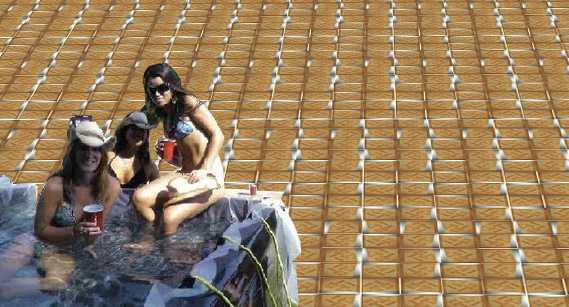
Pero hay una condición de tiempo fundamental en estas maquetas y sus fotos. Cuando fueron tomadas las fotografías los elementos extraños ya habían invadido el espacio aséptico de la maqueta utópica y le acusaron una mayor dosis de realidad, de presente. Es decir, que los borrones, el polvo, las células muertas y los cabellos de Branzi, Corretti y Deganello, al traernos de vuelta el plano de realidad que ellos habitaron nos remiten igualmente al contexto cultural y social de su tiempo, a las ansiedades y energías que nutrieron a No-Stop City. Sin embargo la utopía inscrita en el manifiesto que se conoce, en las decenas de fotos de estas maquetas publicadas por tantos años, irradia una luz que ciega, hace invisible y pospone la realidad del modelo: el presente, que cohabita con la utopía. Es decir, la lucidez e imaginación del proyecto, la fe inyectada por Branzi y sus colegas en su programa y visión crítica de futuro esconde al observador la realidad de la maqueta, que es la suya. La utopía no deja ver la fatalidad de la materia que la forma: la vieja ideología se amarillea como el cartón. “La utopía no está en el fin, sino en lo real. No hay en ella motivación moral, sino un puro proceso de liberación inmediata. No hay en ella alegoría, sino un fenómeno natural…” nos recuerda Branzi1
Morocco Slate, Senegal Burnt Almond y Regal Wood
Como el moho en los modelos de No-Stop City, en las ciudades contemporáneas recurren una y otra vez ciertas tácticas de parasitación e inserción en infraestructuras productivas y comerciales. El hecho no está lejos del centro crítico del proyecto de Archizoom, el cual enunciaba que “en un mundo sin calidad el individuo solo puede satisfacerse mediante su propio -esfuerzo y actividad creativa”.
Nunca antes, como en su estadio genérico, tuvo la cultura material tanta potencialidad para la injerencia, nunca antes pudo ser considerado un sistema tan abierto o de participación como puede ser apreciado ahora. Y es paradójico porque a la producción genérica y la súper normalización hay que reconocerle también una sórdida indiferencia hacia lo doméstico y por tanto al individuo y sus necesidades. La condición autista del universo natural en relación a las problemáticas humanas parece inherente también a lo genérico. Si el sistema se ha abierto no es por empatía social, todo lo contrario, es por indiferencia hacia lo humano, ya no hay interés en cerrarse, en sacar provecho del secreto técnico. Sin embargo el objeto industrial pre-genérico parece más dado a lo hermético, a esconder los principios patentados, a hacerse extraño, inaccesible (a cambio de esto aparece en el objeto un plano que se responsabiliza por la interface, una superficie amigable.)
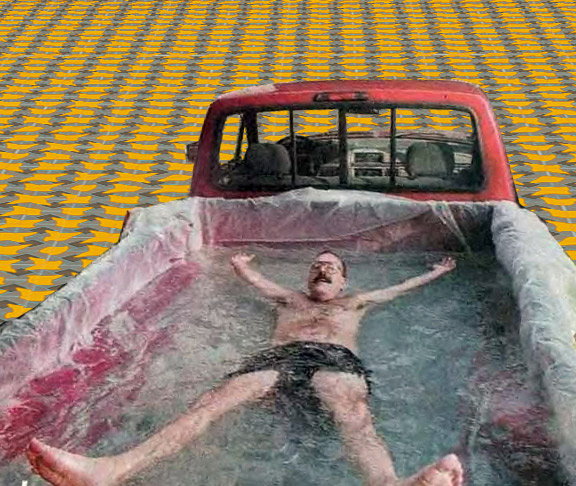
Si un ventilador reparado sigue pareciéndonos una sorpresa folclórica es porque por mucho tiempo el sistema industrial capitalista se valió de cierta inviolabilidad del cuerpo del producto. Quizás se trata de algo tan básico como que al ocultar las vísceras del objeto se potencie el deseo de poseerlo. Quizás, también, al asegurar el perímetro cuantificable del objeto, al hacerlo una porción nombrable e indisoluble este se constituya una mercancía. Una entidad igualada a una cantidad especifica de valor monetario. El objeto industrial contemporáneo -y al diseño hay que reconocerle su participación activa en ese proceso- puede ser entendido, además, como una representación de cierto valor cambiario, como aquel trozo de metal usado como patrón de masa en las básculas tradicionales.
El universo genérico, sin embargo, parece favorecer más el fragmento y no al objeto, la nueva mercancía es semifinish, innombrable en la forma tradicional de silla, mesa, radio. Ahora un recubrimiento para pisos en vinyl adhesivo puede llamarse Morocco Slate, una tabla de bagazo con un acabado plástico puede ser encontrada en ferreterías, como Home Depot, bajo el nombre de Cancún. Muchos de los productos actuales no pueden ser nombrados en el término tradicional de objeto, pero tampoco en el de materias primas. Sin embargo el individuo esta accediendo cada vez mas a la mercancía genérica cuando aun esta conserva su nomenclatura comercial o el código que la organiza durante la producción. Aun con todo el esfuerzo del productor o comerciante por abrir en esta tabla de bagazo un umbral afectivo o de significados tropicales bajo el nombre de Cancún esta adolece de memoria, no puede asociarse a ningún sistema de objetos conocido, no existe ritual de uso relativo a esta tabla en la cultura. Es una materia cruda en términos productivos pero también en términos culturales.
Lo que esta ocurriendo es una inundación incontrolable a escala urbana de materia neutral. Un tsunami de lo genérico ha cubierto la ciudad mientras dormíamos. Los propios comerciantes y productores no reconocen aun el cambio de paradigma. Sin embargo el uso de nombres paradisíacos remite al modelo de hábitat y confort precedente lo que hace pensar que reconocen estar tratando con mercancías sin memoria social.
Esta situación remite parcialmente a proyectos como los de Gaetano Pesce y Global Tools. El acceso actual por los individuos a medios productivos y materiales diversificados, parecía utópico hace 40 años. Los habitantes de los edificios de Pesce podían definir por ellos mismos los espacios interiores y fachadas de sus apartamentos restringidos únicamente por su estructura física y la llegada de sistemas técnicos como agua y electricidad. Pero el individuo en los modelos de Pesce necesita hoy de habilidades para tratar con otras fuerzas infraestructurales: las regulaciones legales comunales, las imposiciones urbanísticas, de seguridad y constructivas. Estaría bien pasar uno de esos edificios de Pesce por la comisión de aprobación constructiva en Little Haiti. Una fuerza regulatoria tan poderosa como el tsunami que surte materia genérica en la urbe le daría posiblemente la forma que hoy tiene ese vecindario.
Sin embargo parece que en el campo restringido de las normas ocurren ciertos desajustes, desacomodos. Entre esos pliegues se filtran riachuelos intermitentes de prácticas individuales, astucias, entendimientos.
Pop-up store “Enter The Dragon”
Pienso que los cuerpos invasivos, que he creído ver, en los modelos de No-Stop City han aguzado su pronóstico. La urbe prevista por Archizoom alcanza con estos elementos intrusos una vigencia notoria. Ciertas prácticas vernáculas intrusivas, improvisadas, provisionales empiezan a ser recurrentes en determinados sectores urbanos acosados por condiciones económicas difíciles. Allí donde las regulaciones dejan vacíos legales se derraman gestos oportunistas, pragmáticos, en ocasiones parásitos2. Los individuos en crisis tienen una conciencia de lo infraestructural, reconocen los torrentes donde es beneficioso meter un dedo para provocar un pequeño y momentáneo desvío.
Si el universo natural y el universo artificial genérico se parecen cada vez más. Si ambos pueden ser considerados torrentes productivos autónomos (la esfera de lo genérico parece auto generar y estructurar sus propias reglas, indiferentes del campo social inmediato.) Si ha ese caudal productivo que es la naturaleza fuimos capaces de entenderle sus ritmos, sus energías y la agricultura devino una sistematización de ese entendimiento, lo mismo podemos hacer con la producción genérica. Hay un tipo de diseño, que puede valerse de tácticas agrarias, una agricultura del campo genérico puede ser implementada.
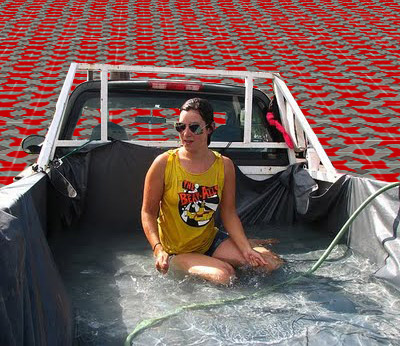
El producto que he escogido para comenzar este proyecto de pop-up store y de una “agricultura” de lo genérico es la losa de vinyl adhesivo suministrada en Home Depot. En conjunto con otros recubrimientos, ya sean de pisos paredes o techos, albergan como muchas otras materias contemporáneas los signos de un sistema de valor que ha priorizado las métricas normalizadas, lo genérico y el tan cuestionado imperio de la homogenización industrial global.
El valor importante de esta materia es su carácter modular. Por el efecto de multiplicación, la producción seriada hace de la losa un vehículo de repetición y por tanto de expansión importantísimo, así como lo hacen los espejos en los proyectos de Archizoom. Aceptando este principio de expansión, e infiltrando la lógica reproductiva del patrón y para proveer esa ilusión expansiva, podemos, en lugar de aplicar un esperado recurso decorativo aplicar una conducta, una astucia, un gesto. En este caso estaremos dando la capacidad a ese gesto, a esa astucia, o a esa conducta de multiplicarse y extenderse hacia el infinito. O al menos, estaremos habilitando la potencialidad para esa expansión. Para alterar nuestras losas adhesivas compradas en Home Depot se pueden usar técnicas de graffiti y emplear métodos reproductivos paramétricos. Con el nuevo patrón estaremos creando un plano “decorativo” paralelo con nuevas implicaciones morales, un plano de decoración forajida. Y es que el método infiltra y parásita un lenguaje tecnológico, una lógica económica y un plano de expresión que parece cerrado y excluyente.
Este proyecto se auto declara temporal. Entiende que en el paisaje infinito de lo genérico los gestos vernáculos se disuelven, ruedan minúsculos hasta desaparecer, como los huesos de opossum en la carretera interestatal I-95.
Ernesto Oroza Nov/2010
1Andrea Branzi, La arquitectura soy yo, Architecture Radicale, Institut d’art contemporain, Villeurbanne, France, 2001
2 Para una extensión de estas ideas ver: Gean Moreno, -Ernesto Oroza, Learning from Little Haiti. E-flux Journal #6, May, 2009. Para una lectura de otros textos asociados visite: www.thetabloid.org
